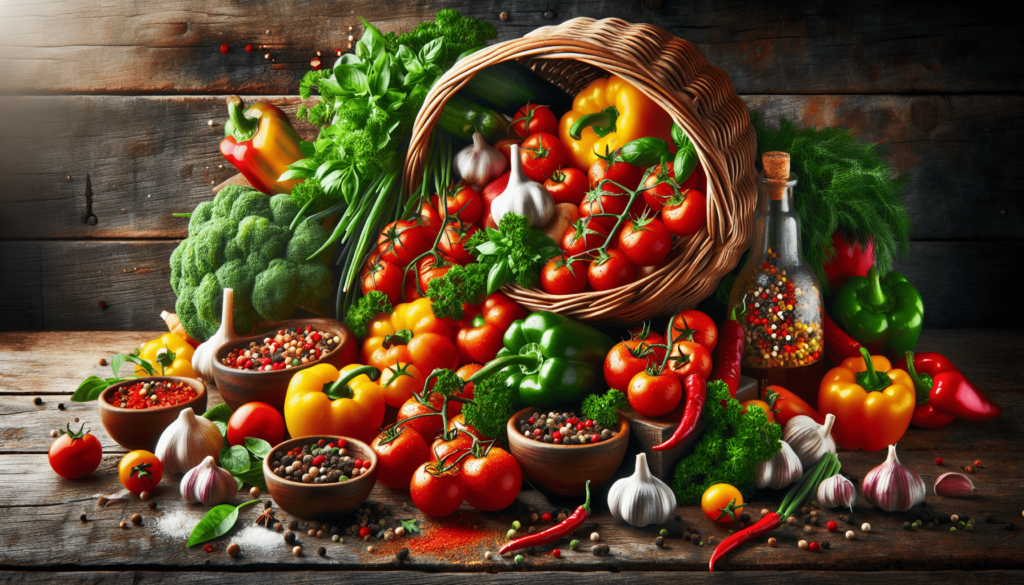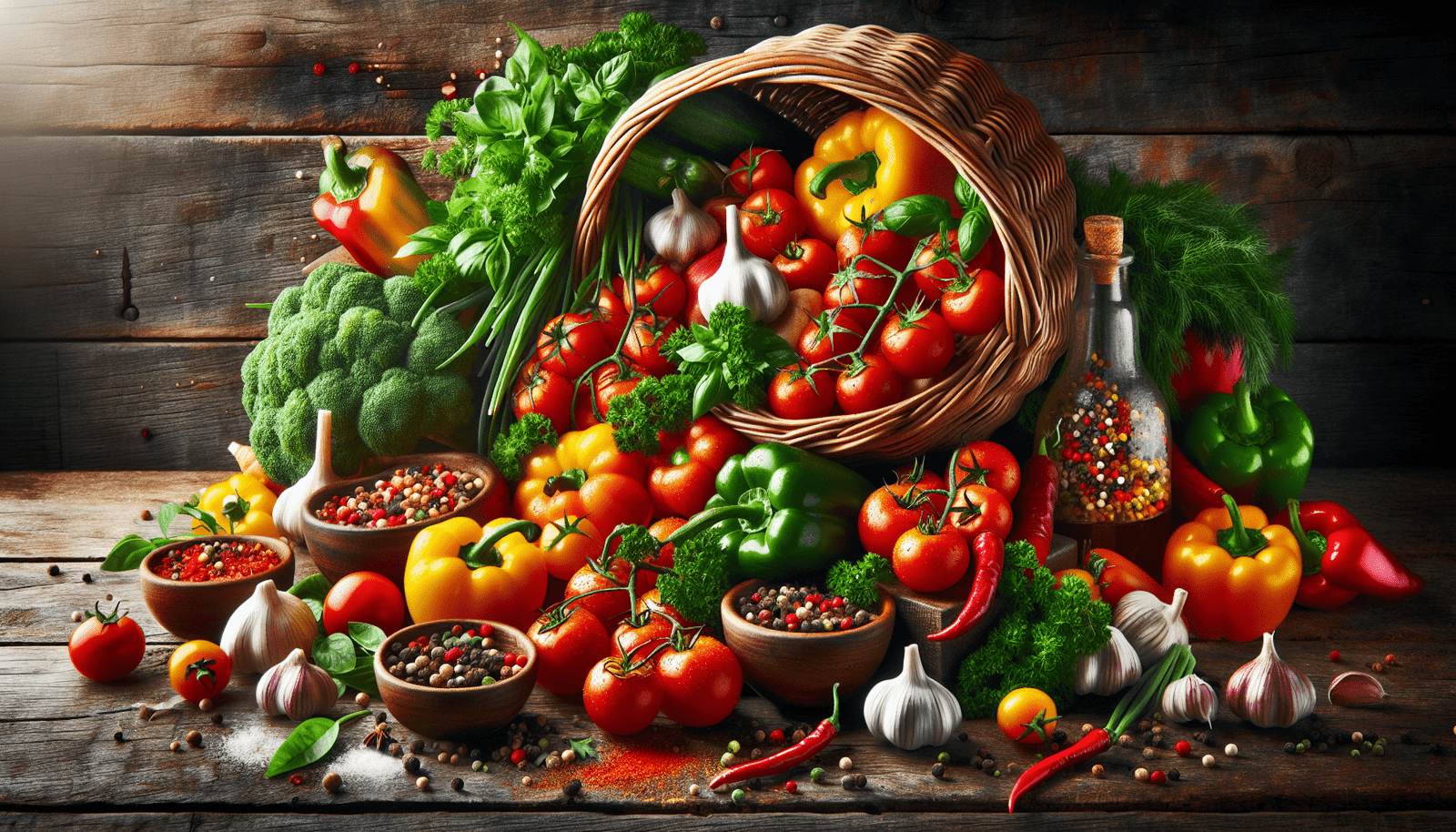Have you ever found yourself pondering what recipe to tackle next, eager to try something new and exciting in the kitchen? Whether you’re a seasoned chef or a culinary rookie, there’s something inherently delightful about crafting a meal that perfectly suits your cooking style. Food isn’t just sustenance; it’s an art form that embraces creativity, tradition, and the joy of sharing with others.

Understanding Cooking Styles
Before diving into recipes, it’s important to understand what we mean by “cooking styles.” From grilling to baking, steaming to stir-frying, each technique carries with it a unique set of skills and flavors. Cooking styles aren’t just about methods—they also reflect cultural heritage, personal preferences, and even practical considerations like time and kitchen equipment.
The Importance of Experimentation
No two chefs cook the same dish in quite the same way. This isn’t a hindrance; it’s an opportunity. Trying out different cooking styles opens up a world of flavors and textures, enhancing your culinary prowess and keeping meals fresh and exciting. Each style can bring out different facets of the ingredients you’re working with, allowing you to discover new tastes.
Grilling: Embrace the Heat
Grilling is a favored cooking style, especially well-loved for the smoky and rich flavors it imparts to food. It involves cooking food over an open flame or heat source, with the food directly exposed to the heat.
Recipe: Classic BBQ Chicken
To make a tantalizing BBQ Chicken, you’ll need:
Instructions:
- Preheat your grill to medium-high heat.
- Season the chicken breasts with salt and pepper, then brush lightly with olive oil.
- Place the chicken on the grill and cook for about 6-7 minutes per side.
- Brush the BBQ sauce on the chicken during the last few minutes of cooking, allowing it to caramelize slightly.
- Ensure the chicken reaches an internal temperature of 165°F before serving.
Tips for Perfect Grilling
Grilling isn’t just about slapping things on the grill; it requires patience and technique. Ensure your grill is at the right temperature, don’t flip the food too often, and let it rest after cooking. These tricks guarantee juiciness and flavor.
Baking: The Art of Precision
Baking is a cornerstone of cooking styles, defined by cooking food in the dry heat of an oven. It requires precision and patience but rewards you with delightful, fluffy, and aromatic creations.
Recipe: Homemade Bread
Bread-making can be therapeutic and delightful. Here’s a simple recipe for a hearty loaf:
Instructions:
- Mix the flour, salt, and yeast in a bowl. Create a well in the center and pour in the water and olive oil.
- Mix until you have a smooth dough, then knead for about 10 minutes on a floured surface.
- Place the dough in a lightly oiled bowl, cover, and let it rise until doubled in size (around 1 hour).
- Preheat your oven to 220°C (428°F). Shape the dough into a loaf and place on a baking tray. Bake for 25-30 minutes.
Mastering Baking Techniques
Baking requires attention to measurement and timing. Never underestimate the importance of precise measurements and temperatures. Use scales rather than cups for better accuracy.
Stir-Frying: Quick and Flavorful
Stir-frying is a rapid cooking technique that is perfect for quick meals. It typically involves cooking small pieces of food in a hot pan with a bit of oil.
Recipe: Vegetable Stir Fry
Fast and nutritious, this vegetable stir fry is packed with flavor.
- 2 tbsp Soy Sauce
- 1 tbsp Sesame Oil
- 2 Cloves of Garlic, minced
- 1 Red Bell Pepper, sliced
- 1 Broccoli Head, cut into florets
- 1 Carrot, julienned
- 100g Snow Peas
Instructions:
- Heat the sesame oil in a large pan or wok over high heat.
- Add the garlic and stir for about 30 seconds until fragrant.
- Add the bell pepper, broccoli, and carrot, and stir-fry for 3-4 minutes.
- Add the snow peas and soy sauce, cooking for another 2 minutes.
- Serve immediately, perhaps over steamed rice or noodles.
Tips for Efficient Stir-Frying
Prepare all your ingredients before you start cooking. Stir-frying happens fast, so having everything ready ensures nothing overcooks. Keep the heat high and move the food constantly for even cooking.

Steaming: Gentle Yet Flavorful
Steaming is an ancient method of cooking that locks in nutrients and natural flavors, offering a healthy way to prepare food without adding additional fat.
Recipe: Steamed Fish with Ginger and Scallions
This recipe showcases how steaming can preserve the delicate texture of fish.
- 2 Fish Fillets (such as tilapia or cod)
- 2 tbsp Soy Sauce
- 1 tbsp Rice Vinegar
- 1-inch Piece of Fresh Ginger, sliced
- 2 Scallions, sliced
Instructions:
- Set up a steaming basket over a pot of boiling water.
- Place the fish fillets in the basket, adding ginger slices and scallions on top.
- Sprinkle with soy sauce and rice vinegar.
- Steam for about 10 minutes, or until the fish flakes easily with a fork.
Why Choose Steaming?
Steaming retains more nutrients compared to other methods like boiling. The gentle cooking process enhances the natural flavors, making it ideal for vegetables and fish.
Braising: The Art of Flavorful Simmering
Braising involves searing food at high temperature and then cooking it slowly in a covered pot with a bit of liquid, resulting in deeply flavorful and tender dishes.
Recipe: Braised Beef in Red Wine Sauce
This tender beef recipe is perfect for a hearty meal.
- 2 lbs Beef Chuck, cut into cubes
- Salt and pepper to taste
- 2 tbsp Olive Oil
- 1 Onion, chopped
- 2 Garlic Cloves, minced
- 2 Cups Red Wine
- 2 Cups Beef Broth
- 2 Bay Leaves
Instructions:
- Season the beef with salt and pepper. Heat the olive oil in a large pot and brown the beef on all sides.
- Remove the beef and set aside. In the same pot, sauté the onion and garlic until soft.
- Return the beef to the pot, add red wine, beef broth, and bay leaves.
- Bring to a boil, cover, and reduce to a simmer for about 2-3 hours, or until the beef is tender.
Benefits of Braising
Braising tenderizes tough cuts of meat and infuses them with flavor. The slow-cooking process lets the juices develop into a rich and harmonious sauce, perfect for a comforting meal.
Roasting: Elevate Your Meals
Roasting is similar to baking but typically at higher temperatures and without covering the food, allowing it to develop a crisp, flavorful exterior.
Recipe: Herb-Crusted Roast Lamb
Impress your friends and family with this succulent, flavorful roast.
- 1 Leg of Lamb (about 4 lbs)
- 4 Garlic Cloves, minced
- 2 tbsp Olive Oil
- 1 tbsp Fresh Rosemary, chopped
- 1 tbsp Fresh Thyme, chopped
- Salt and pepper to taste
Instructions:
- Preheat your oven to 200°C (392°F).
- Mix garlic, olive oil, rosemary, thyme, salt, and pepper to form a paste. Rub evenly over the lamb.
- Place the lamb on a roasting rack in a roasting pan. Roast for approximately 90 minutes, or until it reaches your preferred level of doneness.
- Rest the lamb for 15 minutes before carving.
Perfecting Your Roasting Skills
Roasting requires understanding your oven and the meat you’re cooking. Use a thermometer to check the internal temperature for precise results and allow the meat to rest to retain juices.
Slow Cooking: Set It and Forget It
The slow cooker is a modern kitchen appliance that makes slow cooking convenient and fuss-free, ideal for tenderizing meat and blending flavors.
Recipe: Slow-Cooked Pulled Pork
This pulled pork recipe is sure to be a family favorite.
- 3 lbs Pork Shoulder
- 1 Onion, sliced
- 1 Cup BBQ Sauce
- 1 tbsp Brown Sugar
- 1 tbsp Paprika
- 1 tsp Salt
- 1 tsp Pepper
Instructions:
- Place onion slices at the bottom of the slow cooker.
- Combine brown sugar, paprika, salt, and pepper in a bowl. Rub this mix over the pork shoulder.
- Place the pork on top of the onions and pour the BBQ sauce over the top.
- Slow cook on low for 7-8 hours until the pork is tender and shreds easily with a fork.
Advantages of Slow Cooking
Slow cooking delivers deeply developed flavors with minimal effort. It’s ideal for busy days when you want to come home to a hot meal waiting for you, infused with maximum flavor and moistness.
Sautéing: The Essence of Flavors
Sautéing is a skillful technique that involves cooking food quickly in a hot pan with a small amount of oil or fat. It’s perfect for bringing out the natural flavors in your ingredients.
Recipe: Sautéed Garlic Shrimp
Quick, simple, and utterly delicious, this sautéed shrimp recipe bursts with flavor.
- 1 lb Large Shrimp, peeled and deveined
- 3 Garlic Cloves, minced
- 2 tbsp Olive Oil
- Juice of 1 Lemon
- Salt and pepper to taste
- Chopped parsley for garnish
Instructions:
- Heat the olive oil in a large pan over medium-high heat.
- Add the garlic and sauté for about 1 minute until fragrant.
- Add the shrimp, cooking for 2-3 minutes per side or until pink and opaque.
- Squeeze lemon juice over the shrimp, season with salt and pepper, and garnish with parsley.
Maximizing Sautéing Efficiency
To master sautéing, be sure your ingredients are dry and your pan is preheated. This ensures a good sear and prevents sticking. Don’t overcrowd the pan—cook in batches if necessary.
Conclusion
Cooking is a world of its own, with different techniques that cater to every palate and preference. Whether you’re searing a perfect steak or baking a delicate cake, there’s a method for every culinary endeavor. Embrace versatility in your kitchen adventures and find joy in exploring the endless possibilities each cooking style offers. Adapt these recipes to your taste, and discover the flavors and textures that make your heart—and your kitchen—sing with satisfaction.
Some of the links on this site are affiliate links, which means I may earn a small commission if you click on them and make a purchase, at no additional cost to you. As an Amazon Associate, I earn from qualifying purchases.



